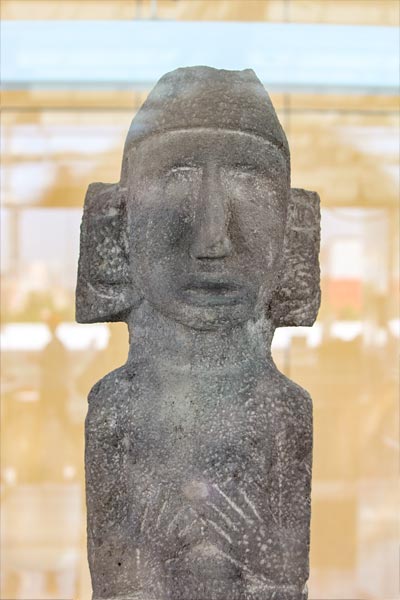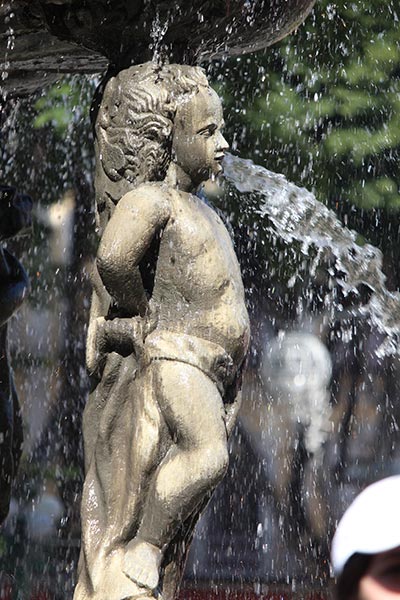Connor Barnhill: Student Report from 2018 Alternative Winter Break to Mexico
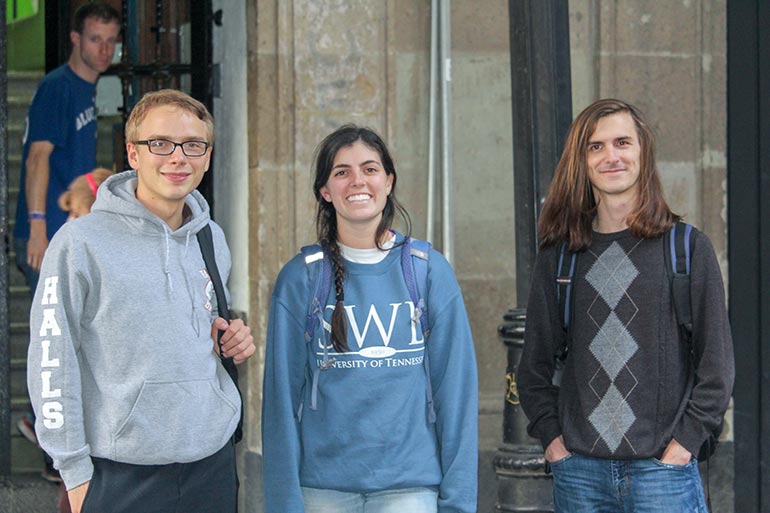
If you have ever traveled to different parts of the United States then you know how different geographical locations within a country can be. The southeast states have a culture, dialect, and history that shares many commonalities with, for example, the northeastern states and yet there are still small details that make each region distinct or unique. I was looking forward to this trip to Mexico because I had been to the Yucatan Peninsula just one year earlier and I was excited to observe the differences between my experience there and the central Mexican states.
The biggest difference between the two locations became apparent on our first day in Mexico City. Not only are the cities in the Yucatan smaller and much less populated than Mexico City, but there was also a vibrant personality to the city, which I did not feel at all during my time in the Yucatan.
On our trip from the airport, the driver took us through some side streets where there was a large open-air market with hundreds of people shopping for and selling authentic Mexican goods. As opposed to the commercial sheen of most brick-and-mortar stores in the Yucatan and along the Gulf coast, these shops were bare-bones and seem to be constructed on the side of the road out of PVC pipe and tarps.
Another difference is that the crowd shopping at these makeshift stalls was composed entirely of Mexicans. These were people going about their daily lives and buying what they needed, not a bunch of tourists shopping for souvenirs. The crowd was so thick that at some points we simply had to stop and wait for them to clear so we could move again, or change our route completely, but I loved every second of it.
As I looked out of my window into the crowd of people passing from vendor to vendor, I realized that no one seemed to really care that four white faces were staring out at them and taking in every second. These people were not concerned with making us feel like tourists in a foreign country, unlike in the Yucatan where everyone treated you as a foreigner. To these people, we were just as much a part of the city as they were, and that was a unique experience, which continued throughout the week.
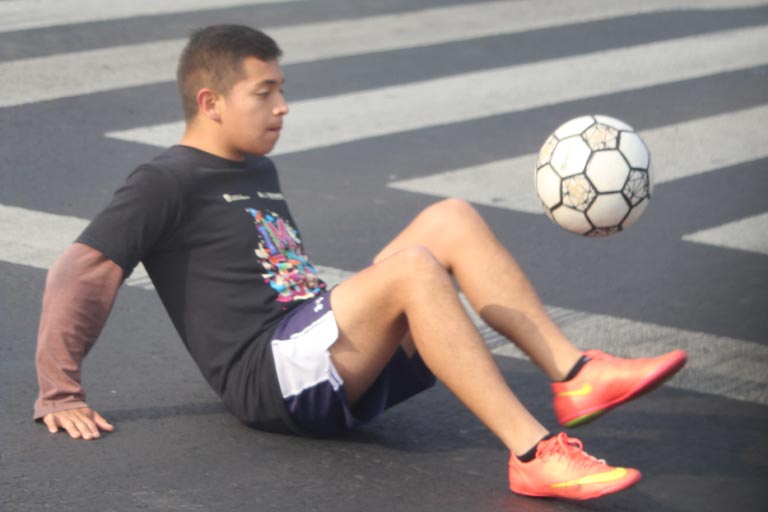
Street performer in Peubla
No matter where we went, it never felt as though we did not belong there. Even with the language barrier and the change in food, climate, and environment, I never felt out of place. I felt as though I was experiencing what it’s like to live in Mexico, not just what it’s like to be in Mexico. When at the farm, constructing the bamboo hut, we would sit down and eat the same food the staff ate, sometimes at the same table. When in the smaller villages which dotted the mountains of central Mexico, we would walk through the streets and visit the churches, the shops, and the restaurants that the villagers themselves frequented, and it never felt as though we were intruding.
There’s a transparency to central Mexico, which allows authenticity to shine through at every moment. The people there are honest, and they are not necessarily there to make your trip worthwhile so that you will come back with your buddies on spring break. But that honesty makes the moments of happiness, camaraderie, and enjoyment all the more genuine. While some people may like to feel as though they are a stranger in a foreign land, the feeling of belonging somewhere is much more fulfilling for me. There’s no way to describe the warmth you feel when you step into a local bakery of a hillside village and the woman behind the counter kneading dough smiles and greets you without a second glance. Standing in the aisle of a supermarket and having the man next to you mime that you could get a better deal if you got this item instead of that one fills you with a certain contentment that I don’t think could be replicated in the touristy areas of the Yucatan.
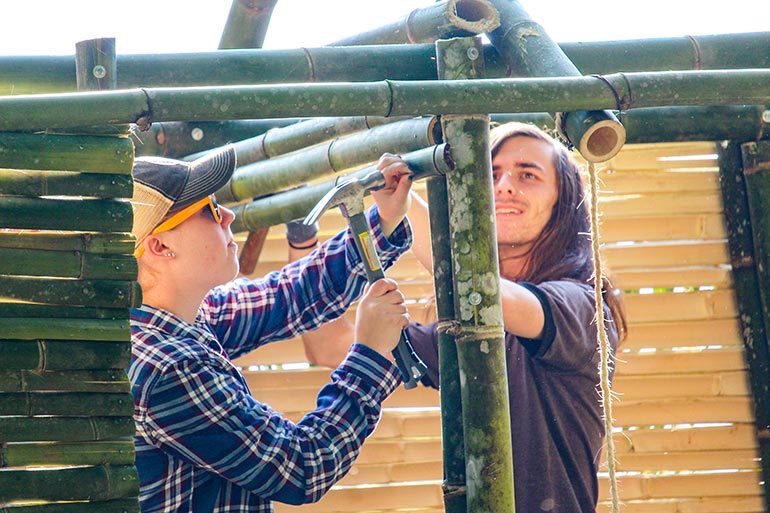
With Kelsey Hay, constructing the dividing wall in the latrina
If I were to have the opportunity to go back to Mexico, I would trade its beaches and resorts for its mountains and villages in a heartbeat. On this trip, I didn’t feel like I was only seeing the parts of Mexico the tourism board wanted me to see – I felt like I was seeing it all. And there’s a beauty to experiencing something in its entirety, even with its imperfections or shortcomings laid bare. You learn to appreciate the little things, and the memory of those little things will travel with you for the rest of your life. I feel that after the trip, I took a little bit of Mexico with me. However, I also feel as though I left a bit of myself in Mexico, not just the work I completed, but the experiences I shared with the people there. Rather than feeling like I’ve lost something, I’ve gained more than I could have ever hoped for.
